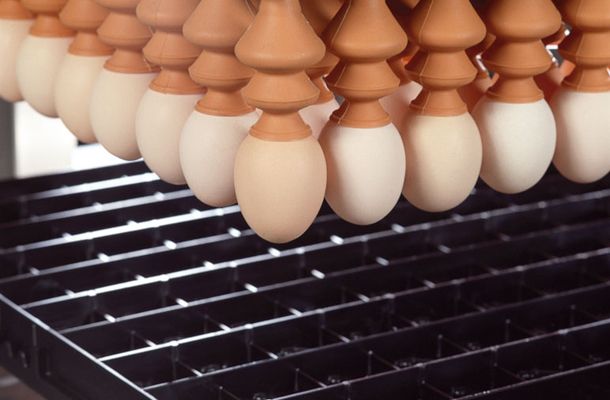Do we understand ‘hatch of fertile’ correctly?
Tags: Hatchery management | Whitepaper
, 11 September 2014

Hatchability is commonly used to evaluate hatchery (and breeder flock) performance. Simply said, percentage hatchability = (number of chicks/number of hatching eggs) * 100. However, different interpretations of both the ‘number of chicks’ and ‘number of hatching eggs’, can cause confusion in hatchery performance accounting.
Consider the following example:
A batch of 100 hatching eggs produces 87 day-old-chicks (see table). Hatchability of eggs set is (87/100) * 100 = 87.0%. However if one of these 87 chicks is of second class quality, it is logical to base percentage hatchability on saleable chicks only: (86/100) * 100 = 86.0%
Evaluating true hatchery performance by calculating hatchability of fertile eggs (“hatch of fertile”) is widely accepted. This makes sense, because no skill, expertise or technology can hatch chicks from infertile eggs.
Returning to the example: eggs are candled before transfer and nine “clears” recognized and removed. It is not uncommon to calculate hatch of fertile based on the number of transferred eggs: (86/(100-9)) * 100 = 94.5 %.
It is unlikely that all nine clears are actually infertile – and performing an egg break-out on the clear eggs will establish true fertility. Suppose of those nine eggs, five are infertile and four show embryos that died during the first week of incubation. This brings real fertility to 95.0%. By this method, the correctly calculated hatch of fertile is not 94.5%, but (86/(100-5)) * 100 = 90.5%: a very significant difference of 4% - simply as a result of defining ‘fertile eggs’ differently.
The question is, on which calculation method is the generally accepted standard for good hatchery performance of 95% hatch of fertile based? When, incorrectly, clears determined by standard candling procedures are the basis for the calculation, it is easier to achieve this standard. However, mostly some of the clears are fertilized eggs that contain a dead embryo. A better definition for the result of this calculation is “hatch of transfer”.
“Hatch of transfer” also depends on accuracy of candling. Imagine in the above example, with precise candling, one additional “clear”, a mid term mortality, was revealed. Hatch of transfer then increases one percent to (86/(100-10) * 100 = 95.5%, although this does not actually mean that hatchery performance is better!
To achieve 95% “hatch of (true) fertile”, 90 saleable chicks should hatch from the 100 eggs set - and with five infertile eggs, only five hatching eggs may be lost due to early, mid or late embryonic mortality.
| Hatch of transfer = (saleable chicks/number of transferred eggs) x 100 |
| Hatch of fertile = (saleable chicks/number of true fertile eggs) x 100 |
Calculating hatch of fertile in daily hatchery practice is challenging, and complicated by the need for correct procedures to accurately estimate true fertility. Just candling is not enough. Early dead embryos during the first days of incubation are incorrectly counted as infertile eggs – and candling equipment’s ability to recognize true infertile eggs depends on accurately calibrating sensors and software.
It is labour intensive to break out a representative number of hatching egg clears, ideally obtained during a 10 day candling procedure. However this does provide the most accurate representation of true fertility and patterns of embryo mortality.
Advise
- Interpret hatchability data only when the method of calculation is known.
- Base hatchability calculations on saleable chicks rather than total chicks hatched.
- Use “hatch of fertile” to better understand true hatchery performance.
- Perform a hatching egg break out on a representative number of clears, preferably obtained during 10-day candling, to estimate true fertility.
- Use “hatch of transfer” if there is no procedure to estimate true fertility.
- Continue to seek improvement even when “hatch of transfer” is over 95%, if early mortality is high.
| Eggs set | "Clears" | 1st class chicks | 2nd class chicks | Total chicks | ||
| 100 | 9 | 86 | 1 | 87 | ||
| Infertile | Early dead | Mid dead | ||||
| 5 | 4 | 1 |
Written by Gerd de Lange
Senior Poultry Specialist
I welcome your feedback on this article - and if you require any additional information, please don't hesitate to contact me.